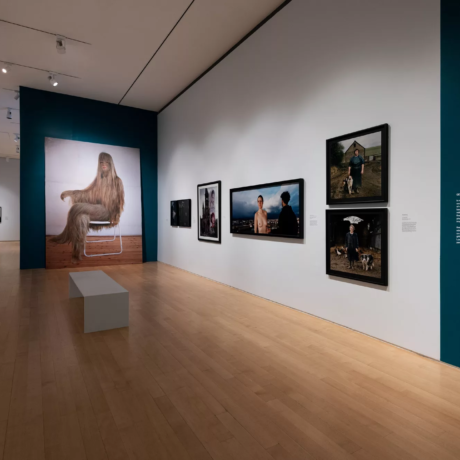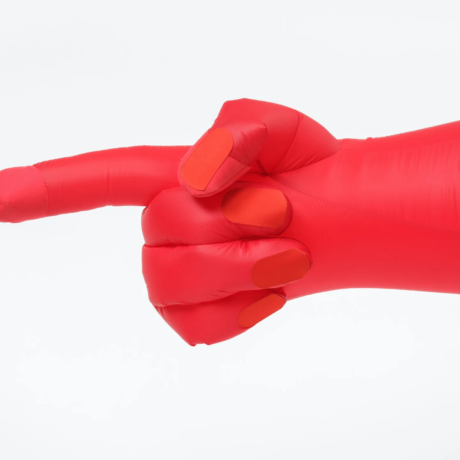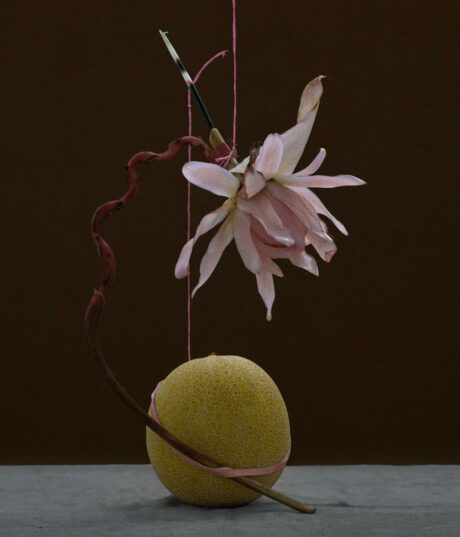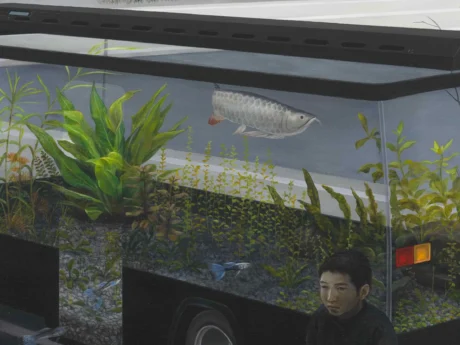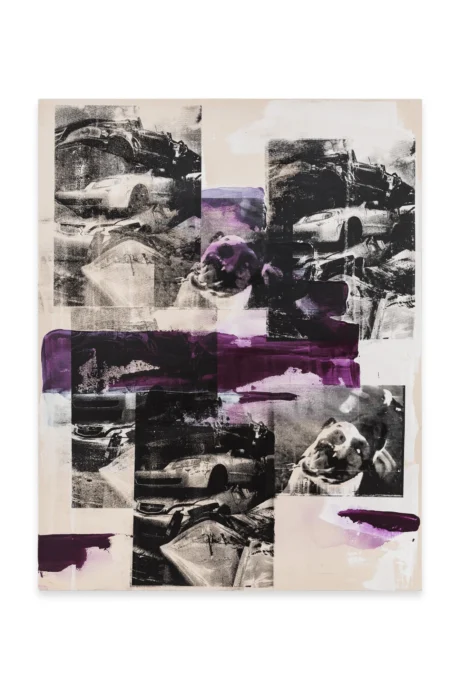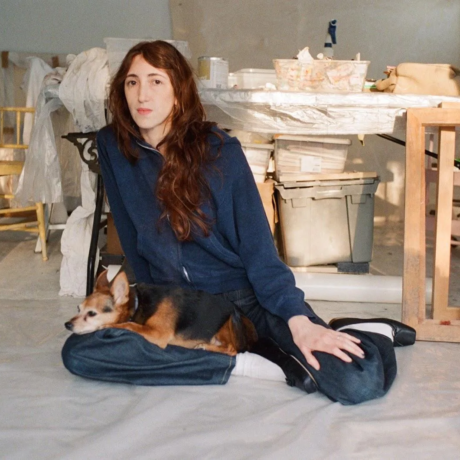Elephant writer Isaac Huxtable reviews Brooklyn Museum’s ‘In the Now: Gender and Nation in Europe, Selections from the Sir Mark Fehrs Haukohl Photography Collection’ for Elephant Magazine.
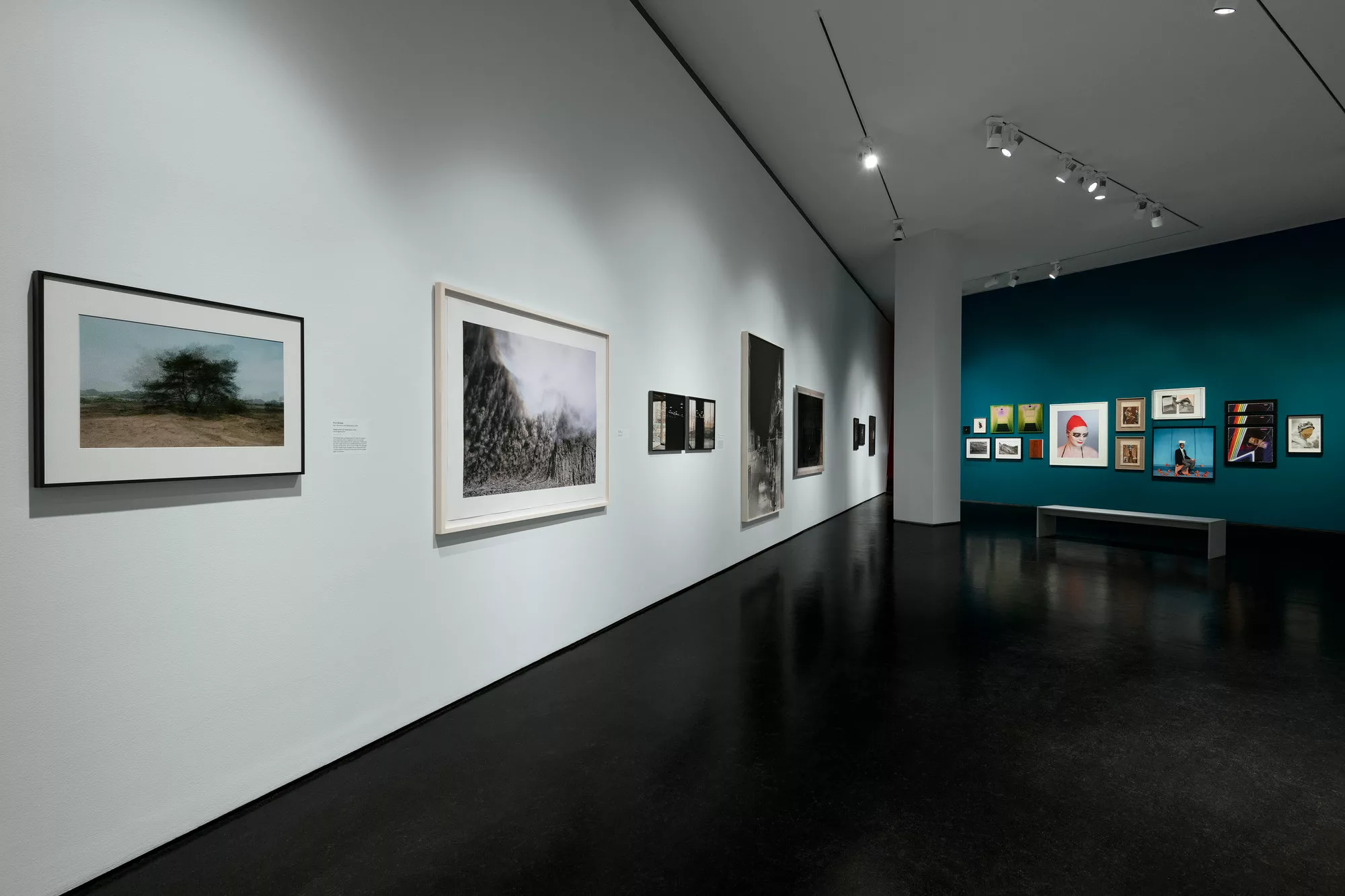
In the Now: Gender and Nation in Europe, Selections from the Sir Mark Fehrs Haukohl Photography Collection is a convergence between points: LA and New York, America and Europe, Gender and Nation. Displaying works by nearly 50 women artists, In the Now was born from the personal collection of Sir Mark Fehrs Haukohl, a compilation of European photography by women artists dating from 2000 to 2020. He began the collection after an introspective look at his own collecting habits: “He had this history of collecting Renaissance art, and then had this awakening, recognising that his collecting was perpetuating gender imbalances in the art world, he decided to do something about it,” Carmen Hermo, curator at the Brooklyn Museum’s Elizabeth A. Sackler Center for Feminist Art tells me. We’re walking through the Brooklyn Museum iteration of the exhibition, a version displayed previously at LACMA. This exhibition runs the length of two or three triangulated walls, flanking the centre’s permanent display and heart: Judy Chiacgo’s 1979 The Dinner Party. Nona Faustine’s White Shoes, also on display March 8–July 7, completes the triangle.
With the collection being donated to both the Brooklyn Museum and LACMA (Los Angeles County Museum of Art), the two galleries– one west coast, one east – began a process of sharing during the Covid-19 pandemic. LACMA exhibited their version in 2021. Now, It’s Brooklyn’s turn.
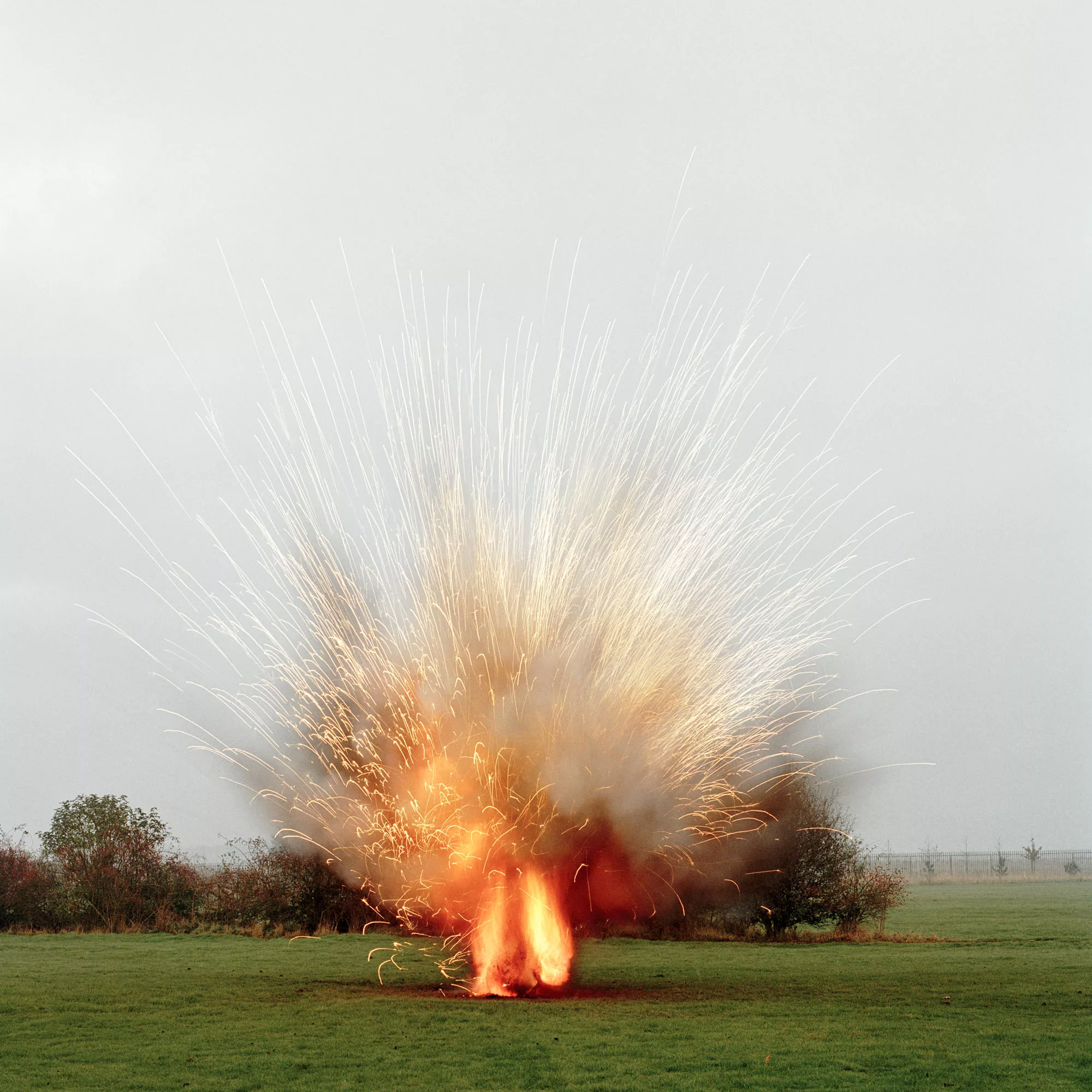
Collaboration came as second nature, LACMA curator Eve Schillo comparing the curatorial selection to a game of cards. Each curator threw down artists, shouting what came to mind. The three curators – Drew Sawyer, Britt Savelsen, and Schillo, operated on a shared wavelength, finding chimes and rhymes where they could. Then, both LACMA and Brooklyn undertook their own teaks, selecting individual pieces that fit within their specific contexts. “This sharing is a great new model,” Hermo says. “Let’s be real, splitting the costs of maintaining a collection goes a long way. We can also share it even further,” she adds. Currently, via the Brooklyn Museum website, you can contact the museum, requesting the collection be brought to your own institution. “I think for a collection of this scale, it’s so transformative… we’re the youngest department in the museum, we were established in 2007. We have a very small collection compared to our colleagues. It’s exciting to have all of these new names, all together.”
These “new names” bring artists well-known in European scenes to new American audiences – and readings. “Gender changes at the border,” Schillo states. “Being a woman in France isn’t the same as being a woman in the States. Incorporate race, class, and religion into that, and you start to see the determining factors of our lives,” she says. In many works, one finds the tampering arm of the state – one of the major determining factors of gender and its phenomenologies. Many of the pieces reflect distinctly European experiences of gender and nation, looming architectural echoes of Nazi Germany, British colonial policies, and the experiences of Muslim women in France. Presented in America, the collection becomes a “dissonant chorus” through a collective and collected positionality. From an American viewpoint, the exhibit asks: what are universal experiences of womanhood? How does the state interact with womanhood and its visual expressions? What changes when visualised on a continental scale? What has, or can, America learn from their European colonial elders?
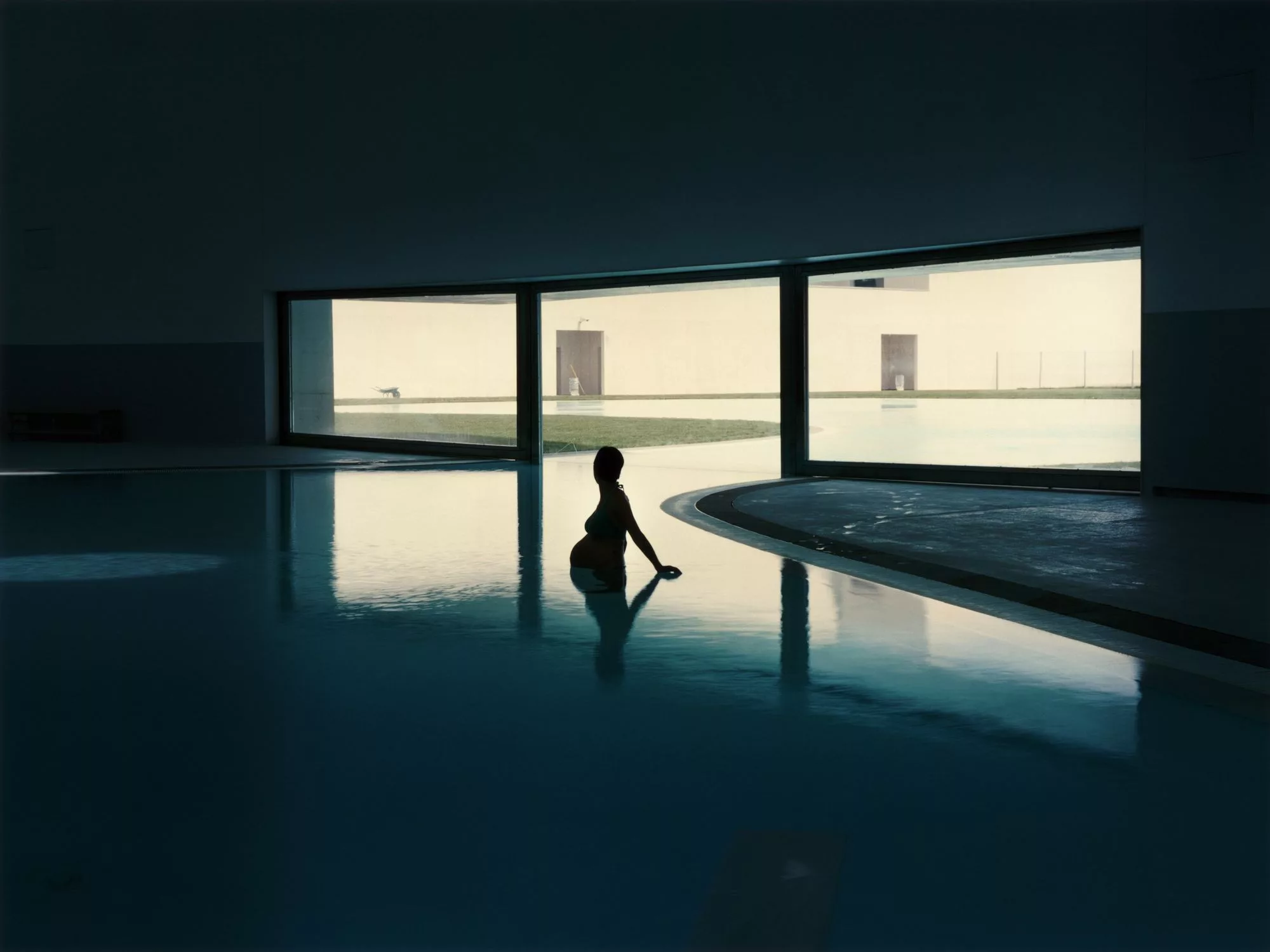
Including artists such as Silvia Rosi, Elina Brotherus, Bettina von Zwehl, Sarah Pickering, and Shirana Shahbazi, the exhibition is divided into three sections: Gender, Nation, and Photography. The loose categories allow for a closer look into the social constructions of gender and nationhood, as well as an exploration into the physicality of photography and how artists have interrupted and experimented with the craft, creating new avenues for “women’s work” within a medium still disproportionally male.
The exhibition provided the American curators with the chance to dive deep into the state of contemporary Europe. European concerns mirrored topics far closer to home: “We’re in dire need of reaching across all of our divisions,” Hermo says. “I think, in a small way, a show like this can push that forward, provide alternative and multiple perspectives. In major ways, these artists are doing that. [In Europe], they’re bringing forward their concerns. We can learn from that.”
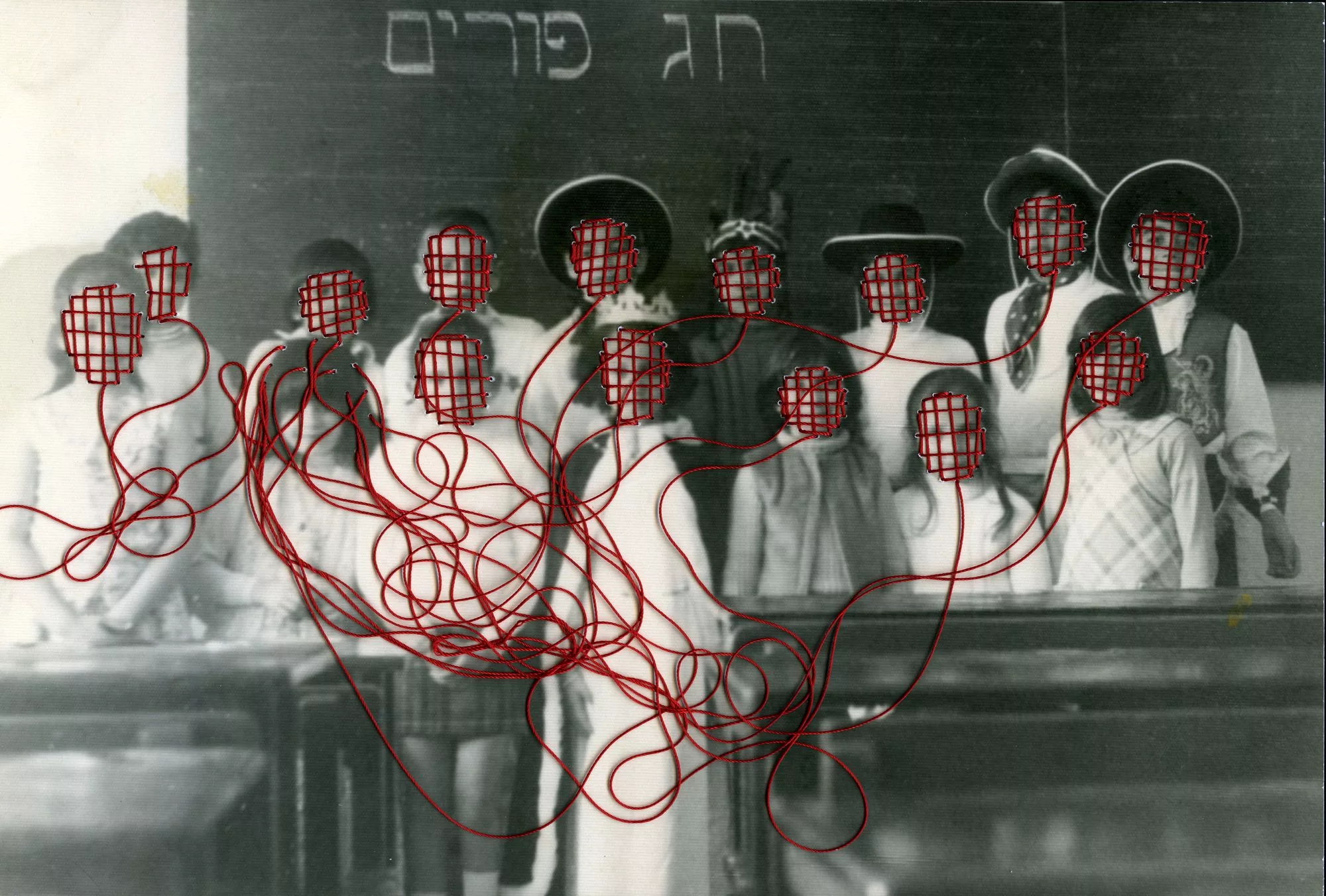
“I feel like with a group show like this, a lot of times, cohesion is the goal,” she adds. “But I think in a way with this exhibition, that fluidity, the range, forces a second look. They’re united by a geographical position, but beyond that, conversations fire in multiple directions. “What binds these works? What separates them?”
LACMA and Brooklyn have both added new photographs to the collection, some of which by artists who migrated from Africa to Europe – now, the conversation becomes even more entangled.
The curators were alert to not apply an “American superstructure” onto the collection, letting it exist as their own, yet purview to American eyes. “We didn’t want to look and just see someone as – for example – the European Cindy Sherman,” Schillo explains. “We had to get out of our own heads somewhat while still being aware of our positions, American ways of seeing.”
The “American ways” might allow works to be understood in a way Europe is too close to see. Maybe we need an outsider to make sense of a collection this vast. In The Now is the centre’s first all-photographic group survey show. This doubles as a major sourcing and cementing of female photography into their growing collection. Continuous additions to the collection creates an organic, growing thing, an organism growing increasingly complex with each new addition. Housed within its new American home, European photography takes on a new perspective.
Written by Isaac Huxtable
In the Now: Gender and Nation in Europe, Selections from the Sir Mark Fehrs Haukohl Photography Collection is on display at the Brooklyn Museum, March 8–July 7.
find out more